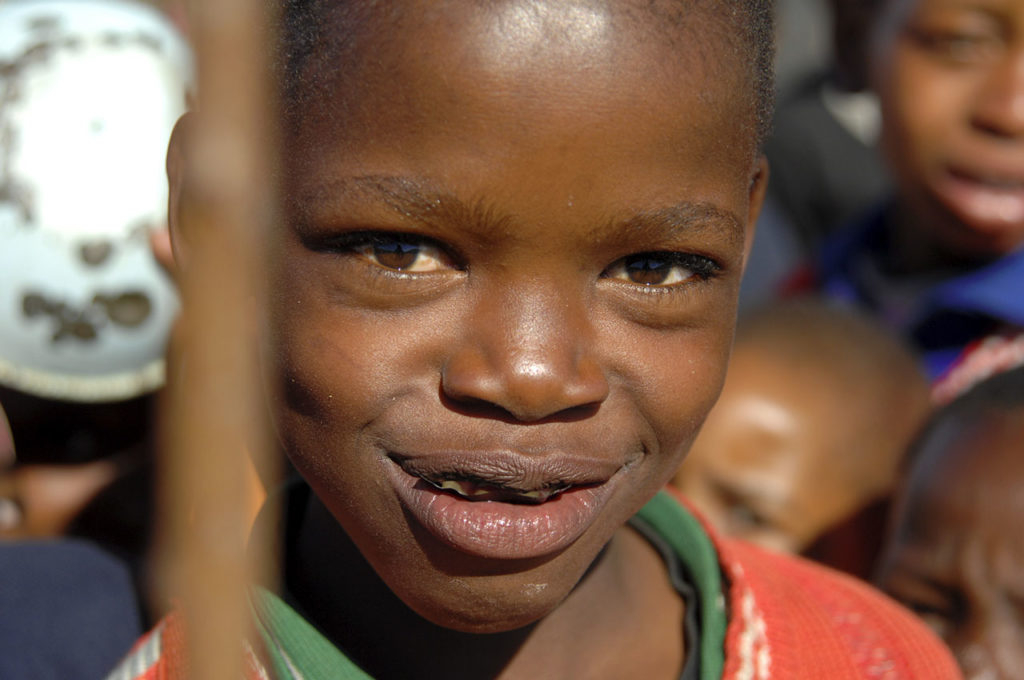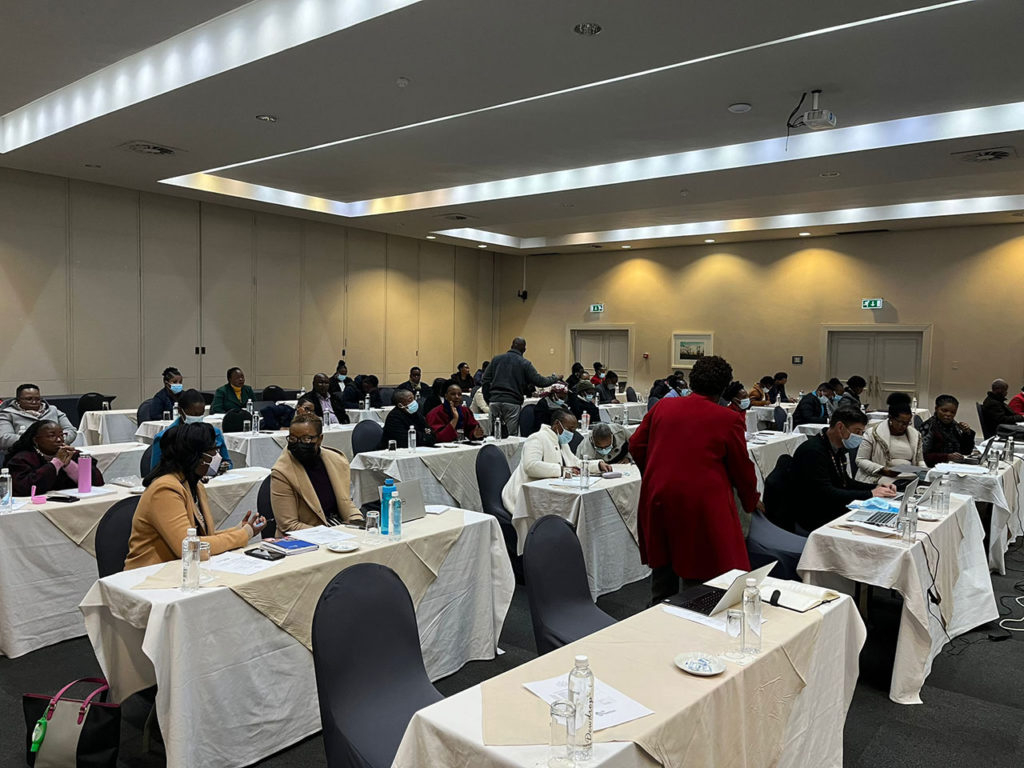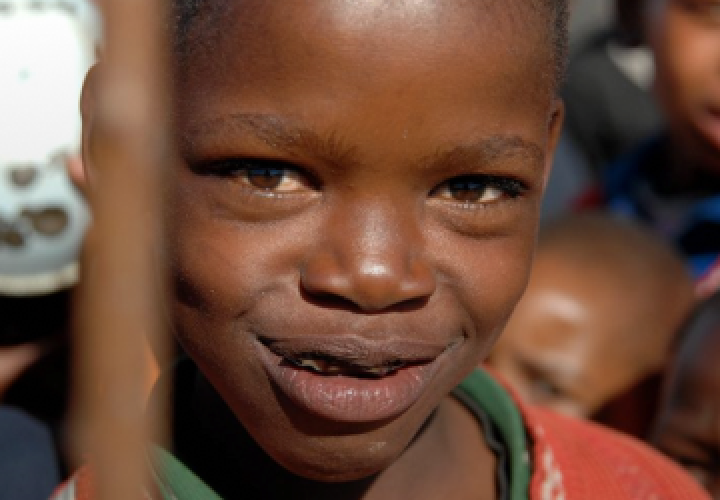The United Nations Country Team (UNCT) in Lesotho has team spirit and is rallying around the national nutrition agenda, starting with the United Nations Resident Coordinator (UNRC). While the country has managed to reduce under5 wasting to a mere 2%, other forms of malnutrition such as anaemia [1], [2], adult overweight/obesity and child stunting remain a challenge [2]. In some cases, the numbers are even rising [2]. This is concerning as malnutrition has consequences on human health (sometimes irreversible) and the country’s economy.
Leading by example
UN colleagues, including UNRC Amanda Khozi Mukwashi, know well that collaboration is crucial to tackling these multi-faceted nutrition problems. This prompted Amanda to play an active role in UN Nutrition by leading the way for this inter-agency coordination mechanism in Lesotho. Her message is crystal clear, “the family is one household, and a One UN approach is the most effective and impactful way to support the community,” said Ms. Khozi Mukwashi.
UNRC stewardship of the UN Nutrition collective brings multiple benefits, both within and beyond the UN circle. It also aligns with the decision to transition the in-country facilitator to the Resident Coordinator’s Office. The UNCT in Lesotho is among the first countries [3] to adopt this hosting arrangement, with potential for others to follow suit. Maseqobela Williams, the UN Nutrition facilitator, has been working to spark dialogue and step up inter-agency collaboration on nutrition in Lesotho since 2017, thanks to funding from the Irish government. Among other benefits, Maseqobela explained that, “The RC’s role has further strengthened UN agency participation from a lens of “delivering as one” for joint programming. The results are evident now as we are seeing stronger commitment and accountability from government and all stakeholders involved.”
Mobilizing the UN family for nutrition
The UNRC’s active engagement in UN Nutrition has also motivated additional UN agencies to take part in the collective’s activities. As it stands, the Resident Coordinator’s Office and the full UNCT are involved in the implementation of the UN Nutrition workplan. This not only encompasses the eight resident UN agencies in Lesotho [4], but also eighteen non-resident agencies (NRAs) [5] that support the current United Nations Development Assistance Framework (UNDAF), 2019−2023. The engagement of the extensive UN family is helping to elevate nutrition to the highest level, which is particularly important amidst the current intersecting crises. It also helps encourage the government (and donors) to allocate resources to this important area and tap the potential of nutrition to catalyse sustainable development.

Analytics foster cohesion and complementarity
A recent mission, conducted by the UN Nutrition Secretariat, provided an opportunity to cultivate relations with the different members. Analytical tools, such as the Nutrition Stakeholder and Action Mapping and the UN Nutrition Inventory, provide another entry point for joint action. For example, seven UN agencies (FAO, UNAIDS, UNDP, UNFPA, UNICEF, WFP and WHO) plus the World Bank are participating in the UN Nutrition Inventory exercise that is currently underway. Essentially, the exercise takes stock of which UN agencies are doing what for nutrition to help the UNCT obtain a holistic view, using a common framework. The colleagues plan to use the findings to shape how nutrition is reflected in Lesotho’s next United Nations Sustainable Development Cooperation Framework (UNSDCF), in concert with the common country analysis (CCA) and emerging ‘how to’ guidance for mainstreaming nutrition, developed by UN Nutrition.

In the meantime, the Inventory exercise has helped UN colleagues better understand the respective roles that the UN agencies play in nutrition. Lethola Mafisa, Community Support Adviser, at UNAIDS in Maseru explains that, “within the Joint UN Team on HIV and AIDS (JUNTA), we support and advocate for nutrition for people living with HIV, who are on treatment.” The UN Nutrition Inventory provided a platform to sensitize other UN colleagues about this aspect of JUNTA’s work, including its contributions to national nutrition guidelines to address the needs of people living with HIV. The exercise is also raising awareness among colleagues at UNFPA about how teenage pregnancy and narrow birth intervals are linked to stunting.
The analytical tools are likewise helping to identify gaps and overlaps with a view to further increasing the coherence and convergence of UN Nutrition support. The ongoing Inventory has triggered discussions about how UNFPA’s outreach to women, including adolescent girls, could be leveraged to help address the nutritional vulnerabilities of these groups. For example, how can UNFPA programmes be best complemented with technical guidance and assistance provided by other UN agencies such as FAO, UNICEF, WFP and WHO in areas like breastfeeding and dietary counseling?
Looking ahead
In conclusion, UNRC leadership is helping to mobilize the entire UN family in Lesotho for nutrition. While the Inventory will be finalized in September, it has already proved to be an illuminating exercise and brought participating UN agencies closer together in the name of nutrition. It will also help chart the course for further integrating nutrition into the UN’s development portfolio.
Additionally, the Inventory has the potential to incite the formulation of new UN joint programmes to combat the country’s pressing anaemia and adult overweight/obesity issues. This could build on the positive experience of the existing Maximum Intervention Programme (MIP) between FAO, UNICEF and WFP, which aims to reduce child stunting. Having a cohesive UNCT will help Lesotho take further strides towards its nutrition targets and bring continuity to those efforts irrespective of the outcomes of the upcoming national elections.
Endnotes
[1] https://data.worldbank.org/indicator/SH.ANM.CHLD.ZS?locations=LS
[2] https://globalnutritionreport.org/resources/nutrition-profiles/africa/southern-africa/lesotho/
[3] Lao PDR, The Comoros, Zimbabwe and some other countries have or will be pursuing this arrangement.
[4] These include the Food and Agriculture Organization of the United Nations (FAO), the International Organization for Migration (IOM), the Joint United Nations Programme on HIV/AIDS (UNAIDS), the United Nations Development Programme (UNDP), the United Nations Population Fund (UNFPA), the United Nations Children’s Fund (UNICEF), the World Food Programme (WFP) and the World Health Organization (WHO).
[5] These include a combination of UN agencies and organizations with strong ties to the United Nations, namely: the International Atomic Energy Agency( IAEA), the International Fund for Agricultural Development (IFAD), the International Labour Organization (ILO), the International Trade Centre (ITC), the United Nations Office for the Coordination of Humanitarian Affairs (UNOCHA), Office of the United Nations High Commissioner for Human Rights (OHCHR), the United Nations Capital Development Fund (UNCDF), the United Nations Environment Programme (UNEP), the United Nations Educational, Scientific and Cultural Organization (UNESCO), the United Nations Industrial Development Organization (UNIDO), the United Nations Conference on Trade and Development (UNCTAD), the United Nations Economic Commission for Africa (UNECA), the United Nations Human Settlements Programme (UN-Habitat), the United Nations Office on Drugs and Crime (UNODC), the United Nations Entity for Gender Equality and the Empowerment of Women (UN WOMEN), the United Nation Volunteer programme (UNV), the World Tourism Organization (UNWTO) and the World Trade Organization (WTO).



